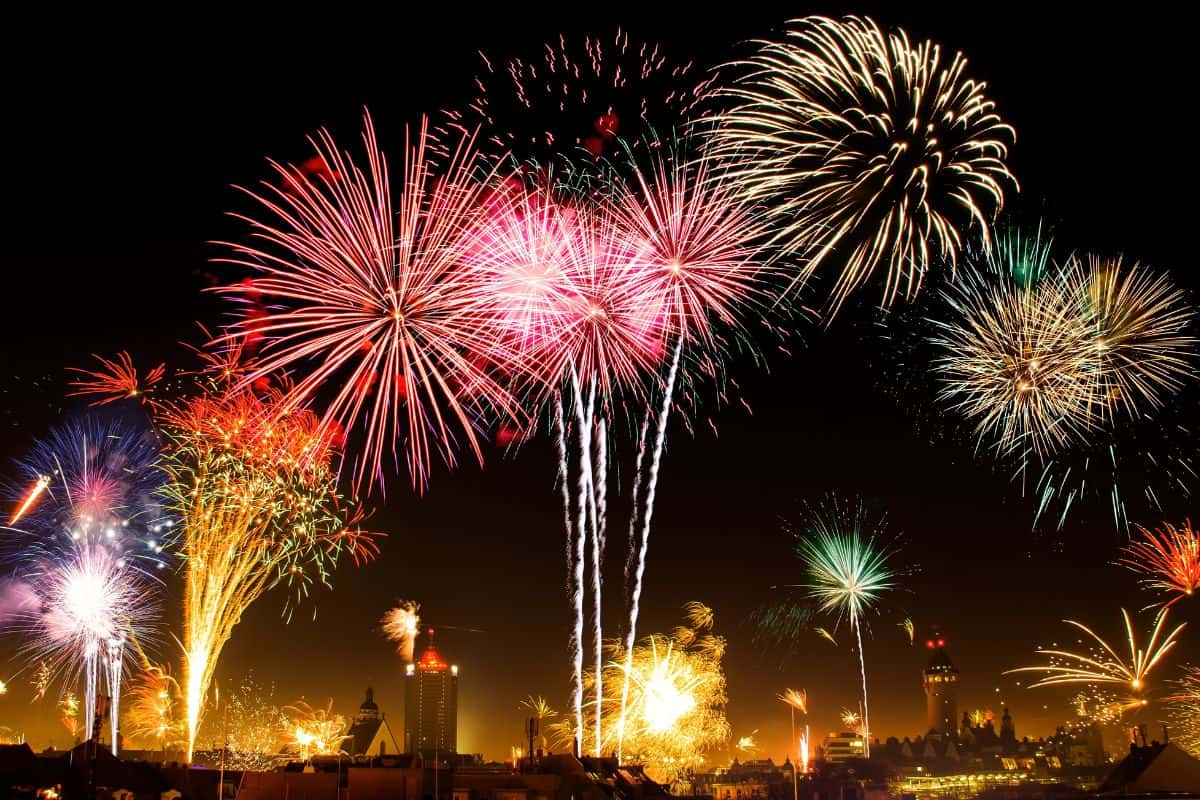Managing Dogs and Fireworks: Expert Tips & Calming Strategies

Are fireworks causing distress to your furry friend? Learn how to manage anxieties associated with dogs and fireworks. Discover effective strategies and expert tips to alleviate your dog's anxiety during fireworks displays. Keep your canine companion calm and safe this festive season. Learn how to create a comforting environment and utilize calming products for a stress-free experience.
Although fireworks are fun for people, they aren't so fun for dogs, fireworks can trigger fear and anxiety. The loud bangs, bright lights, and unfamiliar sounds can overwhelm our canine companions, leading to stress. As responsible pet owners, it's crucial to understand how to support our dogs during fireworks displays and help them feel safe and secure.
Understanding Dogs' Fear of Fireworks
Noise phobia in dogs
Dogs can develop noise phobia, an excessive fear or anxiety in response to loud sounds. Fireworks, with their sudden loud explosions, can trigger this phobia in many dogs. It's essential to recognize the signs of anxiety in our furry friends, which may include trembling, panting, pacing, excessive barking, hiding, or attempting to escape.
Reasons for dogs' fear of fireworks
Several factors contribute to dogs' fear of fireworks. Dogs have more sensitive hearing than humans, so the loud noises of fireworks can be even more distressing for them. The unpredictable nature of fireworks, combined with their intensity and duration, can make dogs feel uncertain and scared.
Common signs of anxiety in dogs
It's crucial to recognize the signs of anxiety in dogs during fireworks displays. Dogs may display behaviors such as restlessness, drooling, frothing, shedding, excessive licking, loss of appetite, dilated pupils, or even destructive behavior. Understanding these signs will help you take appropriate measures to calm your dog.
Preparing Your Dog for Fireworks
Preparing your dog for fireworks involves gradual desensitization and counter-conditioning techniques. By introducing the sound of fireworks gradually and pairing it with positive rewards, you can help your dog associate the noise with something positive, reducing their anxiety over time.
The Desensitization Process
- Start by exposing your dog to low-level firework sounds. You can find recordings or videos online that simulate firework noises.
- Begin playing the sounds at a very low volume while engaging your dog in an enjoyable activity, such as playing with their favorite toy or practicing basic obedience cues.
- Gradually increase the volume over several sessions, always monitoring your dog's reaction and ensuring they remain calm and relaxed.
- If at any point your dog shows signs of anxiety or distress, reduce the volume or take a step back in the process.
- Repeat the process over multiple sessions, gradually increasing the volume each time until your dog can tolerate the sounds of fireworks without becoming overly anxious.
Remember, desensitization and counter-conditioning take time and patience. It's essential to go at your dog's pace and not rush the process. If you encounter difficulties or your dog's anxiety persists, consider seeking guidance from a professional dog trainer or veterinary behaviorist who can provide tailored advice and assistance.
The Academy of Pet Careers emphasizes the importance of proper preparation and training when it comes to managing dogs' anxiety during fireworks. Their comprehensive courses cover behavior modification techniques, including desensitization and counter-conditioning, providing pet professionals with the knowledge and skills to help dogs overcome their fear and anxiety.
By preparing your dog in advance and utilizing desensitization and counter-conditioning techniques, you can help them develop a more positive response to fireworks. Remember to be patient, consistent, and always prioritize your dog's well-being. Together, we can make fireworks a less stressful experience for our canine companions.
Strategies to Calm Dogs During Fireworks
- Creating a safe and comfortable environment: Prepare a designated safe space for your dog during fireworks displays. Choose an interior room where external noise is minimized, close the windows, and draw the curtains to reduce the sound and visual stimuli. Providing a cozy bed or crate with familiar blankets can help create a sense of security.
- Providing distractions and mental stimulation: Engage your dog's mind during fireworks by offering interactive toys, puzzle feeders, or long-lasting chew treats. These distractions can redirect their attention from the noises outside and help alleviate anxiety. Mental stimulation games like obedience training or scent work can also provide a calming focus.
- Using calming products: Certain products can assist in calming your dog during fireworks. Trazodone, a medication for anxiety, can be prescribed by a veterinarian for severe cases. Additionally, there are several calming treats available in the market that contain ingredients like chamomile, melatonin, or L-theanine, which promote relaxation. Dog earmuffs are also useful in reducing the intensity of the sound. However, consult with a veterinarian before administering any medication or using new products.
With a little preparation and knowledge, we can help our beloved dogs cope with their fear of fireworks. Creating a safe environment, providing distractions, and utilizing appropriate calming products can go a long way in alleviating their anxiety. Remember to consult with a veterinarian for personalized advice and consider seeking professional help if your dog's anxiety is severe. Let's make fireworks displays a more enjoyable experience for our furry friends this year and beyond.
Frequently Asked Questions
No, it's crucial to consult a veterinarian before using any medication, including Trazodone. A professional evaluation is necessary to determine the appropriate dosage and ensure the medication is safe and effective for your dog's specific needs.
Several brands offer calming treats designed specifically for dogs with noise phobia. It's essential to look for treats that contain natural ingredients known for their calming properties, such as chamomile, lavender, or valerian root. However, consult with your veterinarian to ensure the treats are suitable for your dog's health and any specific dietary requirements.
Dog earmuffs can be effective in reducing anxiety by muffling the sounds of fireworks. They are designed to fit comfortably over your dog's ears, reducing the intensity of the noise. However, it's important to introduce your dog to the earmuffs gradually and ensure they are not causing any discomfort or distress.
Benadryl, an over-the-counter antihistamine, can be used in some cases to help manage your dog's anxiety during fireworks. However, it's crucial to consult with your veterinarian before administering any medication to determine the appropriate dosage and ensure it is safe for your dog.
While every dog is unique, certain sounds tend to trigger fear and anxiety more commonly. Aside from fireworks, thunderstorms, gunshots, sirens, and loud construction noises can also frighten dogs. Understanding your dog's specific triggers can help you take proactive measures to alleviate their anxiety.
If your dog's anxiety during fireworks or other loud noises is severe and significantly impacts their quality of life, it's recommended to seek professional help. Certified dog trainers or veterinary behaviorists can assess your dog's specific needs and provide tailored behavior modification plans or prescribe appropriate medications if necessary.
 Author - Joseph Schifano
Author - Joseph Schifano
Joseph Schifano is the owner and President of The Academy of Pet Careers. With over 20 years of experience working in the pet field, managing large scale pet care businesses, he has experience in every facet of the industry. Joseph's focus is primarily on the business of pet care but his passion is in understanding animal behavior how a dog's brain works so we can improve the care we provide as pet professionals. He is a huge advocate for Pet Empowerment and Force Free training methods. Read more in Joseph's full bio.
